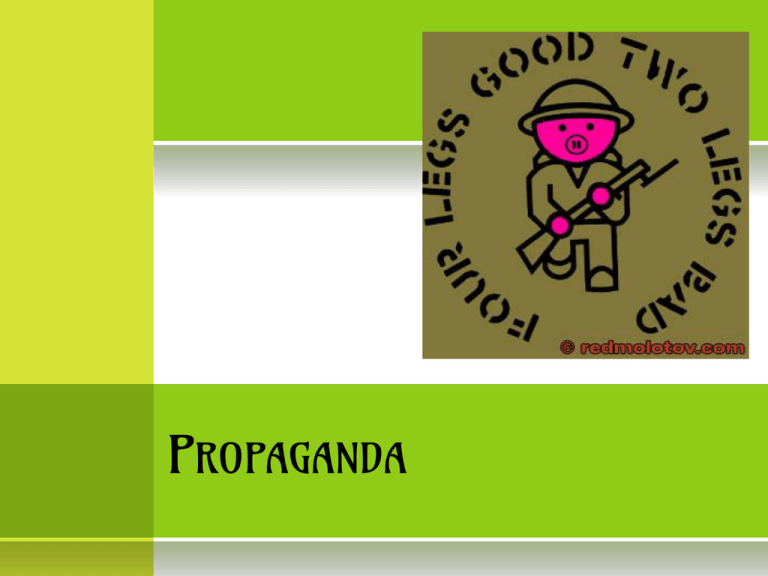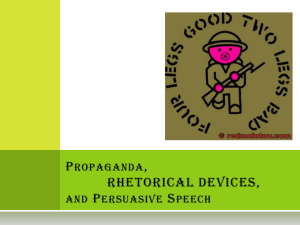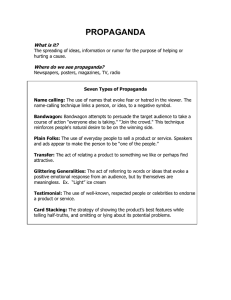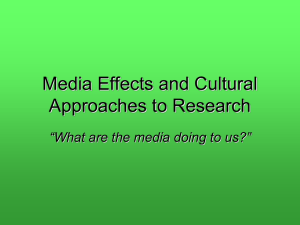Propaganda PowerPoint
advertisement

PROPAGANDA PROPAGANDA ◎ The spreading of ideas or information with the intent of influencing others. ◎ Commonly used in advertising or media. ◎ Known for stretching the truth for the speaker’s own purpose. ◎ Done through WORD GAMES and SPECIAL APPEALS ◎ Effective when the audience doesn’t examine the evidence. REPETITION ◎ Building recognition of the product, person, or idea by constantly repeating key ideas. ◎ In order to be effective, it must be short and easy to remember. GLITTERING GENERALITIES ◎ Words of praise for a product or person that are overly vague or have little depth. ◎ The speaker hopes the audience will associate the positive symbol or word with their idea. EUPHEMISMS ◎ Making an unpleasant reality seem more pleasant by using bland or unloaded words. ◎ “Shell shock” vs. “Post-traumatic Stress Disorder” ◎ What is an example from Animal Farm of this? BANDWAGON ◎ Everyone else is doing it…. ◎ Plays on the idea that no one wants to be left out. PLAIN FOLKS ◎ Convincing the audience the idea is “of the people” ◎ The idea will benefit the average person, not just the elite or underprivileged. NAME CALLING ◎ Links a person or idea to a negative symbol ◎ The speaker hopes the audience will associate the negativity with the person or idea and therefore come to dislike the idea or person. FEAR ◎ Can be positive or negative ◎ Playing on the audience’s fear of the consequences of doing or not doing a particular act. RHETORICAL QUESTION ◎ Questions with obvious answers that are meant to provoke thought in the audience. ◎ Questions that aren’t meant to be answered. ◎ Examples: ◉ How far must we go to create peace? ◉ Teacher: Do I really want you getting up to sharpen your pencil now instead of listening to the directions? TESTIMONIAL ◎ Having some kind of celebrity or authoritative figure recommend a product/ endorse a public figure. PROPAGANDA ASSIGNMENT Now it’s your turn to create a piece of your own propaganda. You need to create an advertisement on a poster that portrays at least two of the types of propaganda we have discussed. It can either be selling a product or a political ideology. You will also need a paragraph explaining the type of propaganda you use, either on a separate paper or on the back of the poster. Things you will need to include in your paragraph: what type of propaganda your advertisement is, which rhetorical appeals it uses, a description of the advertisement itself, and why the propaganda will work on the general public.





